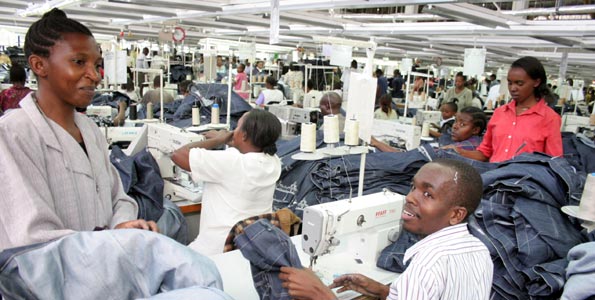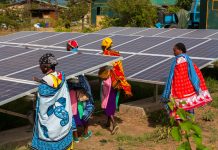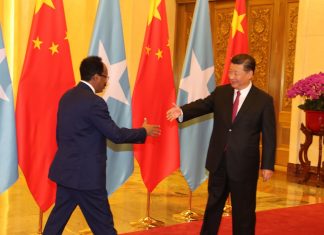Africa’s textile industry is a complex one. It has lots of promise, but many factors hinder it from reaching its full potential.
In an interview with AfricaStrictlyBusiness.com, Joseph M. Nyagari, program and ICT manager at the African Cotton & Textile Industries Federation (ACTIF), points out that Africa produces about 1.38 million metric tons of cotton lint, which is approximately 5 percent of the world’s cotton production of 24.74 million metric tons.
The actual consumption or value addition to the cotton fiber produced is 23 percent of production or .33 million metric tons, he says.
ACTIF, which seeks to promote trade and increase market access for the cotton, textile, and apparel industry in Africa, contends that the continent can produce much more cotton than it currently is doing.
“Most of the textile industry in Africa is running under 50 percent capacity, or have been closed for the last fifteen to twenty years due to liberalization or due to second-hand clothing,” explains Nyagari. “At the production level, Africa is only able to consume about 0.33 million metric tons, which amounts to about 23 percent of the cotton fiber produced. This means about 76 percent is exported in raw form, hence very little value addition is made.”
He notes that Africa also has the greatest potential for growth, considering that it imports three-fourths of the demand for fabric from outside Africa. “We can also enhance growth in fiber production, since we have one-third of the world’s arable uncultivated land,” he says.
Africa’s textile and apparel exports to the United States are increasing, thanks mainly to the African Growth and Opportunity Act (AGOA), the cornerstone of the U.S. government’s trade and development engagement with Sub-Saharan Africa. Exports to the European Union also are increasing under the EU’s Economic Partnership Agreements with African countries.
The United States is now the main destination of Sub-Sahara African garments. Nyagari says the region exports approximately US$1 billion in apparel to U.S. markets under AGOA.
AGOA allows qualified countries to ship specified products to the United States tariff-free. The legislation expires in 2015, but President Obama has said he is working to convince Congress to approve the extension of the Act.
Egypt, a non-AGOA country, is also major textile exporter to the United States, thanks to a bilateral market access arrangement under Qualified Industrial Zones. Egypt alone accounts for close to $1 billion worth of textile and apparel exports, Nyagari says.
Egypt, along with other North African countries, especially Tunisia and Morocco, export heavily to EU markets, using the strategic advantage they have from preferential market access. “Tunisia, Morocco and Egypt account for close to $9 billion in textile and apparel exports into EU, which is more than 90 percent of such exports into EU,” explains Nyagari.
While demand is growing for African textiles, many of the current textile factories are not African owned.
“There is a mixed ownership structure of the factories across the value chain in Africa. At gin level, majority of the owners are big cotton trade companies like Cargill, Olam International, and Plexus Cotton Ltd., together with local indigenous Africans. Textile and spinning is almost balanced with Chinese, Indian and African ownership,” notes Nyagari. “At the apparel level, the ownership is also mixed, but with a stronger ownership of Asians—Chinese, Indians, Bangladeshis, etc.—who have mainly established their subsidiaries in Africa to take advantage of AGOA and duty-free exports into EU.”
Cheap Chinese textiles and “bend downs” (the selling of used clothing, usually from America, on the streets) have severely cramped the desire for African-made garments.
“The consumption of finished garments by the domestic market has however been increasing. This market is catered to through a combination of local production, imported garments, second-hand clothing and illegal imports. The exact distribution is not easily available but a number of estimates point to second-hand clothing, illegal and legal imports as accounting for the largest share in that order,” says Nyagari.
Inexpensive clothing from China and Chinese penetration into the local textile market have roused the ire of African manufacturers. Counterfeits and copyright infringements are also of key concern to the African manufacturers.
Not long ago, Nigeria arrested, but soon released, a group of illegal Chinese textile workers, a symbolic move demonstrating that Africans are pushing back.
Anil K. Gupta, an expert on globalization and emerging markets based at the University of Maryland at College Park, says the imports from China lead to a shrinkage in the scale of African manufacturers, making it even harder for the latter to compete with the Chinese. “The tensions result from the fact that China is a manufacturing powerhouse while Africa is a manufacturing minnow,” he says.
Chinese companies saw and took advantage of an import market opportunity, but there are huge investment opportunities within the African textile industry, Nyagari argues.
“Investment in value-addition, especially in the intermediary level (textile and spinning), provides the greatest opportunity in order to meet the growing demand for high-quality fabric for export, and to substitute the local imports for industrial and corporate wear and back-to-school demand,” he explains. “Investment opportunities also exist in the primary sector for cotton production sector to meet the growing demand for lint.”
OriginAfrica 2012, held in Ethiopia, stressed the need to put Africa on the map as a preferred place to do business in the international textile and apparel industry. Now in its fourth year, the annual trade show is the main showcase for Africa’s textile opportunities.
Though valuable, a trade show is far from enough, observers say.
“Africa needs a manufacturing revolution,” Gupta asserts. “The only way out is for African countries to become serious about building up the manufacturing sector. There cannot be a solution just for the textile sector without thinking of manufacturing sector as a whole. Africa’s labor costs are much lower than China’s. The reason it cannot compete with China is because of weaknesses in infrastructure. Correcting this weakness would help not just the textile sector but all types of manufacturing.”













